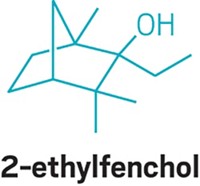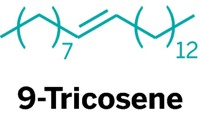Advertisement
Grab your lab coat. Let's get started
Welcome!
Welcome!
Create an account below to get 6 C&EN articles per month, receive newsletters and more - all free.
It seems this is your first time logging in online. Please enter the following information to continue.
As an ACS member you automatically get access to this site. All we need is few more details to create your reading experience.
Not you? Sign in with a different account.
Not you? Sign in with a different account.
ERROR 1
ERROR 1
ERROR 2
ERROR 2
ERROR 2
ERROR 2
ERROR 2
Password and Confirm password must match.
If you have an ACS member number, please enter it here so we can link this account to your membership. (optional)
ERROR 2
ACS values your privacy. By submitting your information, you are gaining access to C&EN and subscribing to our weekly newsletter. We use the information you provide to make your reading experience better, and we will never sell your data to third party members.
Education
Newscripts
Dancing Chemists, Old Butter, Asparagus Urine
by Lauren K. Wolf
November 1, 2010
| A version of this story appeared in
Volume 88, Issue 44

Although the ability to dance is not typically listed as a prerequisite for joining a Ph.D. program in chemistry, Maureen McKeague and her labmates recently found out that it's a definite plus. The scientists, members of Maria C. DeRosa's bionanotechnology research group at Carleton University, in Ottawa, won the top prize in this year's international Dance Your Ph.D. contest, organized by Science magazine.
Beating 44 other competitors in physics, biology, and the social sciences, the researchers took home $1,000, giving chemists everywhere bragging rights for the year. McKeague, a third-year grad student who spearheaded production of the winning dance video, tells Newscripts that the group will soon decide how to spend the cash. To start with, she says, "we will probably have a party."
In the video, the group acts out the Selex process (systematic enrichment of ligands by exponential enrichment), a method for selecting short strands of DNA and RNA called aptamers against a target molecule. McKeague's thesis work specifically focuses on finding signaling aptamers to bind to homocysteine, an amino acid in the blood that is indicative of cardiovascular disease.
"Every one of my students wanted to be a part of this," DeRosa says with pride. The associate chemistry professor adds that "it's nice for chemistry to get some good press for a change."
To watch the winning video, visit the "Newscripts" blog at cenblog.org, or go to vimeo.com/14528924.
The chemistry group over at social-news site Reddit (reddit.com/r/chemistry) has been taking a look at classic articles published in the Journal of the American Chemical Society. One particular gem, entitled "Note on a Sample of Old Butter," is an investigation of the effects of two years' time and frequent exposure to sunlight on a block of the dairy goodness (1887, 9, 3).
A. A. Breneman, the study's author, notes that "the peculiar odor of rancid butter, which was soon acquired, disappeared after a few months" and finds that white granules developed in the sample. "As to their composition," Breneman says after examining the butter under a microscope, "they are probably stearine."
"Chemistry must have been more fun then," one Reddit commenter says of the article. Newscripts submits that there was also probably less of a need to write grant proposals in Breneman's day.
Benjamin Franklin, another observer of natural processes, once noted that "a few stems of asparagus eaten shall give our urine a disagreeable odor," according to a recent article in Chemical Senses (DOI: 10.1093/chemse/bjq081). Although this phenomenon has been studied for more than a century, new information is still coming to light.

Researchers at Monell Chemical Senses Center, in Philadelphia, and at the University of South Florida recently studied a group of test subjects in an effort to understand people's ability to smell asparagus urine. "We learned that some people cannot smell the odor, and some people cannot produce it," says Danielle R. Reed, a member of the Monell team. "These two traits are not linked."
Subjects provided plain and asparagus urine specimens, as well as cheek cells from which their DNA was extracted. They then sniffed both samples of their own urine and samples from others in the test group. In those subjects who could not detect the sulfurous asparagus metabolites, the researchers found a single DNA base-pair mismatch, or polymorphism, in a large cluster of olfactory receptor genes on chromosome 1q44. So "the inability to smell the odor is a genetic trait," Reed says.





Join the conversation
Contact the reporter
Submit a Letter to the Editor for publication
Engage with us on Twitter